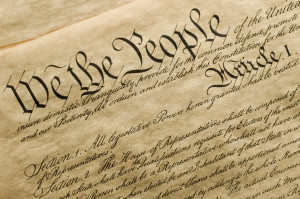 A famous saying is “don’t judge a book by its cover.” Delaware is significantly smaller than most states (2nd smallest) but packs a punch. It is often referred to as the “Diamond State” or “Small Wonder” due its physical size and big contributions to the nation. This state can also be seen as a hidden gem; being surrounded and overshadowed by its neighboring states, Pennsylvania, Maryland, and New Jersey, it constantly screams for our attention.
A famous saying is “don’t judge a book by its cover.” Delaware is significantly smaller than most states (2nd smallest) but packs a punch. It is often referred to as the “Diamond State” or “Small Wonder” due its physical size and big contributions to the nation. This state can also be seen as a hidden gem; being surrounded and overshadowed by its neighboring states, Pennsylvania, Maryland, and New Jersey, it constantly screams for our attention.
Business Climate
Delaware has a positive economic outlook with job growth expected to rise approximately 2% annually. Just like being the first state of the union, Delaware tries to get a head start with everything. It’s known for promoting business growth, technology and innovation. More than half of the U.S. publicly traded companies are incorporated in the state of Delaware. The state wants to provide safe haven for businesses to grow with their friendly corporate laws. A few notable companies that call Delaware home are DuPont, AstraZeneca, and Nemours. So the state has a strong foundation in biotechnology, material sciences, and research.
The state is also among the top 10 states in regards to population density. There is a healthy source of young professionals. A main source of the state’s employment is within the education and social services. Delaware continuously pursues youth education and investment in the future.
Tax Climate
According to the Tax Foundation’s 2015 State Business Tax Climate Index, Delaware is among the top half, ranking 14th out of 50. One thing that makes Delaware stand out to most people when it comes to taxes is that the state does not collect sales and use tax. That equates to a lot of savings for consumers and shoppers in the state of Delaware.
On the other hand, the state imposes the 9th highest corporate income tax among all states, which is a flat rate of 8.7%. Delaware’s state and local corporate income tax collections per person were $293 in 2012 which ranked 6th highest nationally.
Delaware’s personal income tax system consists of six brackets with rates from 2.2% to 6.6%. Its top rate of 6.6% is the 17th highest among states levying an individual income tax. Delaware’s state and local income tax collections per person were $1368 in 2012 which ranked 8th highest nationally. Even though citizens of Delaware enjoy not paying sales tax, the state makes up for it by collecting more taxes in other places.
Delaware is known for being aggressive in collecting escheat or “unclaimed” property. Since there are many companies incorporated in Delaware, the state lays claim to a significant amount of escheat property. In 2014, the state collected over $470 million in escheat properties and that amount is expected to rise in 2015. Because of the cumbersome and punitive nature of the program, many companies have argued the unfair and unlawful methods of collecting the escheat properties.
This year, the federal court has denied the dismissal of Temple-Inland Inc.’s complaint against the state of Delaware on the basis of unlawful estimations of the company’s “unclaimed property” liability dating back to 1986. The court’s decision to keep the complaint alive, brings the issue to light and could potentially cause significant changes to how Delaware handles escheat properties.
In an effort to improve Delaware’s escheat laws, the state has made a few changes recently. For additional information, click here to view our recent blog on Delaware’s escheat laws.
Tax Credits & Incentives
New Business Facility Corporate Income Tax Credit: This program, which was also previously referred to as the Blue Collar Tax Credit, provides tax credits to eligible businesses making qualified investments and job creation.
- A business or corporate taxpayer will be deemed eligible if it makes a qualified investment of $200,000 or more, as well as hires five or more qualified employees with a minimum salary of $40,000 per employee.
- The tax credit entitles the taxpayer to $500 for each qualified employee and $500 for each $100,000 invested, not to exceed fifty percent of their tax liability in a given year.
Unused credits may be carried forward. The credits can be taken each year over a ten year span but may not exceed 50% of the company’s pre-credit tax liability.
Research and Development Tax Credit (R&D): The program allows qualified businesses with research and development expenses to obtain a tax credit that is limited to 50 percent of their Delaware income tax liability. The R&D tax credit for the taxable year is equal to:
- 10 percent of the excess of the taxpayer’s total Delaware qualified research and development expenses for the taxable year over the taxpayer’s Delaware base amount
- 50 percent of Delaware’s apportioned share of taxpayer’s federal research and development tax credit using the alternative incremental credit method (under Section 41(c)4 of the Internal Revenue Code).
In addition, under House Bill 318, the state increased the R&D tax credit available to smaller businesses, while keeping in place the annual cap of $5 million for the credit as a whole. Under this act, businesses with less than $20 million average annual gross receipts for the most recent four years are entitled to a credit equal to 100% of the corresponding federal credit.
Random Facts
- Delaware was the first state to ratify the federal Constitution — December 7, 1787, becoming the first state in the Union.
- Delaware has 3 counties, the fewest of any state having counties.
- Delaware has a small population, ranking 45th among the states, but an even smaller land size, coming in at 49th.
- Delaware is the only state without any National Park System units such as national parks, seashores, historic sites, battlefields, memorials, and monuments.
- The Lady Bug is Delaware’s official state bug.


















